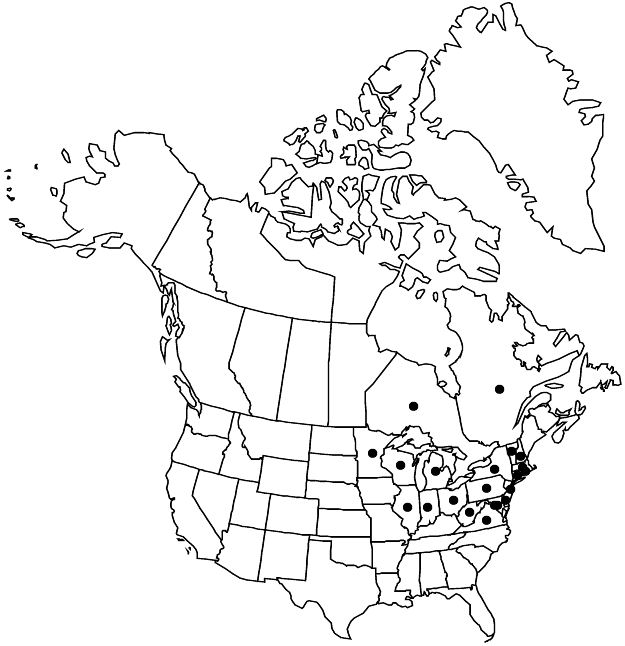Difference between revisions of "Viola affinis"
Ann. Lyceum Nat. Hist. New York 2: 138. 1826.
FNA>Volume Importer |
FNA>Volume Importer |
||
| Line 71: | Line 71: | ||
|publication year=1826 | |publication year=1826 | ||
|special status=Endemic | |special status=Endemic | ||
| − | |source xml=https://jpend@bitbucket.org/aafc-mbb/fna-data-curation.git/src/ | + | |source xml=https://jpend@bitbucket.org/aafc-mbb/fna-data-curation.git/src/f6b125a955440c0872999024f038d74684f65921/coarse_grained_fna_xml/V6/V6_196.xml |
|genus=Viola | |genus=Viola | ||
|species=Viola affinis | |species=Viola affinis | ||
Revision as of 20:14, 24 September 2019
Plants perennial, acaulescent, not stoloniferous, 5–15 cm; rhizome slender, becoming thick and fleshy with age. Leaves basal, 1–6, ascending to erect; stipules lanceolate, margins entire or fimbriate, apex acute; petiole 2–10 cm, glabrous; blade green abaxially, unlobed, narrowly to broadly ovate or narrowly deltate, 1.5–10 × 1.5–10 cm, not fleshy, base cordate to broadly cordate or almost truncate, margins crenate to serrate, ciliate or eciliate, apex acute to obtuse, surfaces sparsely pubescent adaxially, rarely glabrous. Peduncles 3–15 cm, glabrous or pubescent. Flowers: sepals lanceolate to ovate, margins ciliate or eciliate, auricles 1–2 mm; petals lavender-violet to dull reddish violet on both surfaces, lower 3 white basally and darker violet-veined, lateral 2 bearded, lowest 10–22 mm, usually obviously bearded, rarely beardless, spur white or same color as petals, gibbous, 2–3 mm; style head beardless; cleistogamous flowers from prostrate to ascending peduncles. Capsules often reddish or purplish-flecked or green, ellipsoid, 5–10 mm, glabrous or puberulent. Seeds beige, mottled to bronze, 1.5–2.5 mm. 2n = 54.
Phenology: Flowering Apr–Jun.
Habitat: Open or wooded wet areas, meadows, stream banks, thickets, shores of lakes, seasonally dry areas.
Elevation: 100–2000 m
Distribution

Ont., Que., Conn., Del., D.C., Ill., Ind., Md., Mass., Mich., Minn., N.H., N.J., N.Y., Ohio, Pa., R.I., Vt., Va., W.Va., Wis.
Discussion
L. E. McKinney (1992) considered Viola affinis, and much of what botanists had called V. nephrophylla, to be essentially the same taxon. After studying additional specimens, reviewing literature (H. E. Ballard 1994; A. Haines 2001b), and discussions with others (J. Cayouette, H. E. Ballard, A. Haines, pers. comm.), he chose to maintain these as separate taxa. Reports of V. affinis in the Gulf coastal states based on specimens or photographs are usually attributable to V. missouriensis.
Viola affinis reportedly hybridizes with V. hirsutula (= V. ×consobrina House), V. cucullata (= V. ×consocia House), V. brittoniana (= V. ×davisii House), V. sororia (= V. ×filicetorum Greene [as species]), V. sagittata var. sagittata (= V. ×hollickii House), and V. nephrophylla (= V. ×subaffinis House).
Selected References
None.